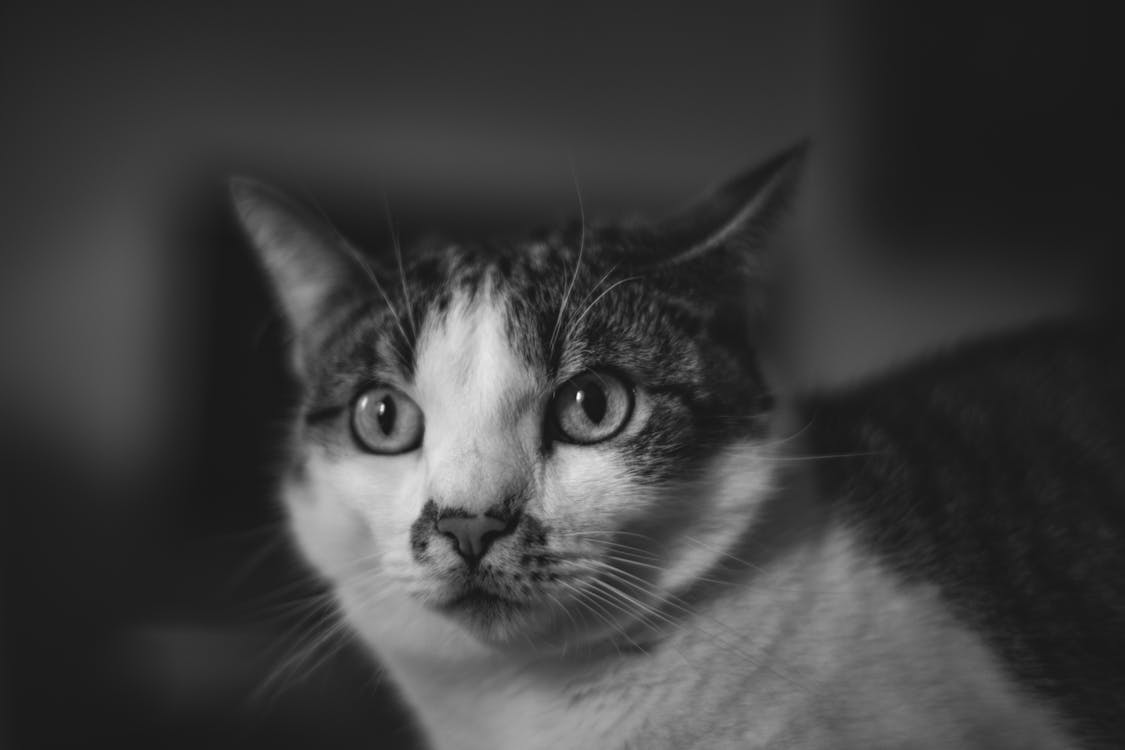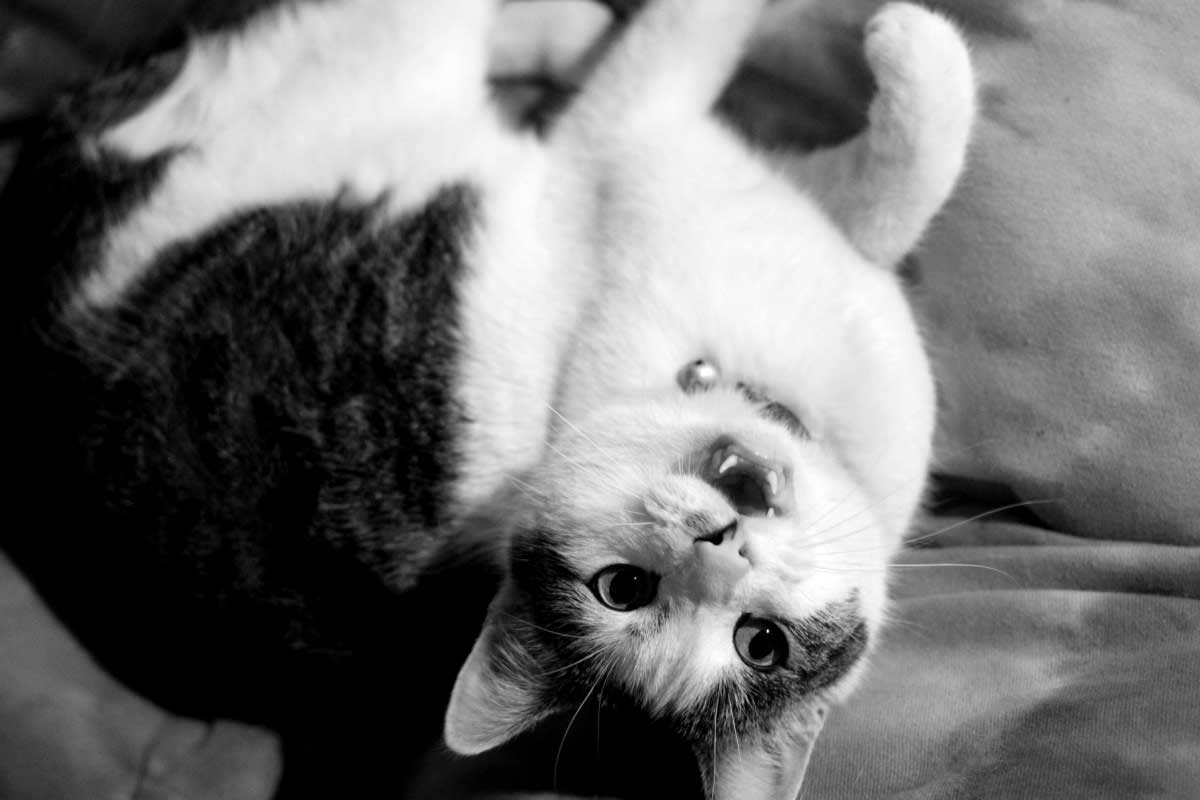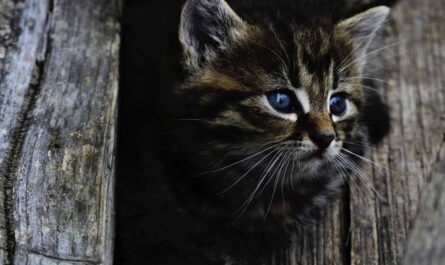How to comfort a scared cat? This article will feature how to comfort a scared cat. A symphony of whimpers erupts from beneath the bed, punctuated by the frantic scratching of tiny paws. Your feline friend, usually a picture of regal confidence, has morphed into a trembling ball of fur, eyes wide with terror. Whether it’s a booming firework or a lurking vacuum cleaner, fear can strike even the bravest of cats, leaving us human companions scrambling for ways to mend their ruffled whiskers. But fear not, fellow cat whisperers! Here’s a purr-fect guide to navigating the delicate art of comforting a scaredy-cat, transforming those quivering meows into contented purrs. Keep reading.
How to Comfort A Scared Cat
A quivering ball of fur, wide eyes reflecting a world of shadows – a scaredy-cat’s plight tugs at the heartstrings of even the steeliest souls. But clumsy attempts at comfort can backfire, sending our feline friends spiraling deeper into anxiety. So, how do we navigate this delicate dance, transforming trembling fear into purring contentment? The key lies in respecting their space, offering soothing sounds and familiar scents, and engaging in gentle, playful distractions. Patience is our compass, guiding us through each tentative paw step and twitch of the tail until, slowly, fear melts away, replaced by the warmth of trust and understanding. In this journey of comfort, we become their heroes, whispering assurances that everything will be okay and that in this haven, loved and cherished, even the bravest of hearts can find solace. Here are some tips on how to comfort a scared cat:
1. Understanding Feline Fear
Delving into the intricacies of feline fear reveals a multifaceted tapestry of emotions that define these enigmatic creatures. Cats, with their innate sensitivity, become finely tuned receptors to the fluctuations in their environment. The slightest deviation from the familiar can trigger a cascade of anxiety-induced responses. These responses, ranging from subtle shifts in behavior to more overt signs like hissing or aggression, are the cryptic language through which a scared cat communicates its distress. To effectively address their fear, one must embark on a journey of decoding these nuanced signals.
2. Create a Safe Haven
Understanding a scared cat necessitates the establishment of a secure haven that serves as an emotional anchor during turbulent times. This refuge goes beyond mere physical space; it is a meticulously curated environment that cocoons the cat in a sense of familiarity and control. Picture a serene room adorned with the cat’s cherished possessions—soft blankets, familiar toys, and cozy resting spots. In this haven, fear dissipates as the feline finds solace in the tangible remnants of normalcy, reclaiming a semblance of equilibrium amid the storm of anxiety.
3. Gentle and Gradual Approach
Approaching a frightened cat is akin to performing a delicate dance, where every step must be measured with finesse and every gesture executed with patience. Treading lightly into their space, one must adopt a soothing cadence in speech and move with deliberate gentleness. Abrupt gestures are akin to thunderclaps in the feline psyche, intensifying their anxiety. Instead, an extended hand offered for a tentative sniff or a treat proffered as a peace offering acts as a bridge of trust. The gradual unfurling of connection becomes a symphony of reassurance, each notes a step towards dispelling the shadows of fear that grip the cat’s fragile psyche.
4. Utilize Pheromones
Unlocking the potential of pheromones presents a groundbreaking strategy for pacifying a distressed cat. One remarkable product in this domain is Feliway, a synthetic reproduction of feline facial pheromones. Mirroring the natural scent cats use to demarcate their territory as safe, Feliway can be strategically applied by spraying it in the cat’s environment or utilizing diffusers. This ingenious method crafts a calming atmosphere that not only alleviates stress but also fosters a profound sense of security, essentially rewriting the narrative of the cat’s emotional landscape.
5. Soft and Calming Music
In the intricate orchestration of a cat’s emotional responses, the role of soundscapes cannot be overstated. An innovative approach involves introducing soft and calming music as a potent tool for auditory reassurance. The genre of choice often leans towards classical melodies, or specifically curated playlists tailored to induce feline relaxation. This auditory intervention, akin to a lullaby for the anxious soul, weaves a serene ambiance that gently cradles the cat’s senses, skillfully unwinding the threads of anxiety that knot its emotional fabric.
6. Reading the Subtle Whispers
Cats are masters of unspoken emotions, expressing their feelings through the poetry of posture and the symphony of whiskers. A swishing tail can be a flag of fear, flattened ears a plea for retreat, and dilated pupils a window to inner turmoil. Honing your awareness of these nonverbal cues is crucial. Instead of forcing affection on a flattened body, offer a gentle blink, a reassuring murmur, and space to process their anxieties. Respecting their nonverbal vocabulary builds trust and allows you to tailor your comfort to their specific needs.
7. The Therapeutic Power of Play
Fear can feel like a dark room, but play acts as a welcome ray of sunshine. A dangling feather toy, a playful chase with a crinkly ball, or the challenge of a puzzle feeder – these seemingly simple amusements become powerful tools for distraction. As your cat engages in the joy of play, the grip of fear loosens, replaced by a surge of happy hormones and positive associations with their surroundings. Remember, keep the play gentle and fun – a sudden loud noise or an overexcited approach can shatter the fragile trust you’ve built.
8. Creating an Aromatic Sanctuary
Nature’s calming balms come to the rescue in the form of essential oils. Lavender, with its lavender fields of tranquility, and chamomile, with its chamomile meadows of serenity, can be diffused in the air or sprinkled on cozy bedding. These aromatic whispers not only fill the room with soothing scents but also trigger your cat’s olfactory memory, perhaps evoking positive experiences from their past. The calming scents become an invisible cloak of comfort, swaddling them in a tranquil environment that encourages them to let go of tension and embrace relaxation.
9. Slow Introduction to New Faces
Imagine a scaredy-cat huddled in a corner, eyes wide with apprehension at the sight of strangers. Rushing in with enthusiasm only fuels their fear. Instead, we weave a bridge of gradual introduction. We offer a haven, perhaps a cat tree perch from which they can observe the newcomers from afar. A gentle smile, not an excited wave, communicates our calmness. Scattered treats during these encounters become tiny tokens of friendship, paving the way for tentative steps toward acceptance. Building familiarity brick by brick, we chip away at the wall of fear, replacing it with the warmth of newfound connections.
10. Professional Consultation
Sometimes, fear lingers like a stubborn shadow. In these cases, embracing professional help becomes a paw-sitive step. Veterinarians and feline behaviorists possess a treasure trove of knowledge about feline anxiety. Through thorough observation and gentle interaction, they uncover the roots of the cat’s fears. Tailored strategies, like environmental enrichment or specific training techniques, bloom from this understanding, offering personalized pathways to inner peace. Remember, seeking professional guidance isn’t a sign of failure, but an act of love and commitment to your furry friend’s well-being.
11. Empathetic Body Language
Comforting a scaredy-cat is a silent conversation spoken not through words, but through the subtle symphony of body language. We become chameleons, mirroring their movements to weave a tapestry of understanding. A slow blink, a feline language of trust, melts away walls of fear. We lean back, mirroring their relaxed posture, offering a non-threatening presence. Direct eye contact, often perceived as a challenge, is replaced by a soft gaze, creating a haven of safety. In this silent dance of empathy, we speak their language, whispering assurances that they are truly seen, understood, and loved.
12. Temperature Comfort
For our feline friends, comfort often comes hand-in-paw with warmth. Unlike humans, their internal thermostat runs significantly higher, making a cozy environment essential for their well-being. Imagine a cat curled up on a sun-drenched windowsill, basking in the golden rays like a miniature solar panel. That’s the kind of warmth we want to replicate. Consider placing their bedding in a sunny spot, complete with fluffy blankets or a plush cat bed that feels like a luxurious hug. A strategically placed heating pad can also do wonders, acting as a comforting heat stone against which they can snuggle, melting away worries as effectively as snowflakes under a summer sun.

13. Routine and Predictability:
Routine might seem mundane to us, but to a scared cat, it’s a soothing balm for the soul. Think of it as a predictable melody playing in the background of their lives, each notes a familiar chime that chases away the dissonance of fear. Sticking to consistent feeding times, playtime schedules, and even grooming routines provides a comforting sense of control. No more wondering where the next meal will come from or when the world will throw another unexpected curveball. Predictability becomes a sturdy blanket of normalcy, wrapping them in a sense of security and allowing them to relax into the present moment.
14. Grooming as a Bonding Ritual:
For cat lovers, the gentle purr that accompanies grooming is like a love song in low frequency. But beyond the melody, there’s a deeper connection being forged. Grooming, a cornerstone of feline social interaction, becomes a powerful bonding ritual when shared between humans and cat. As the soft bristles of the brush dance across their fur, not only are we removing tangles and debris, but we’re also whispering words of affection and care. This tactile communication builds trust, fosters a sense of security, and creates a shared moment of intimacy that transcends words. It’s a silent promise that says, “I’m here for you, I understand you, and I love you.” And in that quiet understanding, fear loses its grip, replaced by the purring symphony of contentment.
15. Monitoring Health
Sometimes, fear isn’t just a shadow in the mind, but a whisper from the body. Regular veterinary check-ups become detective work, uncovering any hidden aches or pains that might be fueling the scaredy-cat’s anxieties. A throbbing toothache or a twinge in their joints can express itself as fearfulness, making a thorough examination crucial. Addressing these underlying health issues, like swatting away pesky flies, removes the source of discomfort and allows the cat to reclaim their peace of mind. Remember, a healthy body paves the path for a happy heart, and even the bravest of souls can get spooked by the whispers of pain.
16. Multi-level Vertical Spaces
Imagine a castle, not of stone and mortar, but of scratching posts and cat trees. For our feline friends, these multi-level kingdoms offer more than just playtime – they provide a sanctuary in the sky. Scaling these vertical towers satisfies their inner explorer, allowing them to survey their domain from a lofty perch. This elevated vantage point isn’t just about dominance; it’s about control. Seeing the world from above grants them a sense of security, like a watchful hawk on a mountaintop. So, embrace the vertical, build the towers of comfort, and let your scaredy-cat climb their way to newfound confidence.
17. Positive Reinforcement
Reinforcing positive behavior with rewards forms the basis of positive reinforcement. When a scared cat exhibits calm or relaxed behavior, offering treats or verbal praise establishes a positive association. This reinforcement encourages the cat to associate feelings of security and comfort with specific actions, gradually mitigating their fear. Every scaredy-cat has its kryptonite – loud noises, new faces, and unfamiliar spaces. Pay close attention to what sets off their anxieties. By identifying these triggers, you can create a proactive comfort plan. Maybe it’s offering a cozy hideaway during noisy events, introducing new people slowly, or providing a distraction toy when visiting the vet. Understanding their fears lets you become their superhero, anticipating their anxieties and shielding them from their kryptonite. See why thousands of cats love BoxCat
18. Patience and Persistence
Comforting a scaredy-cat isn’t a dash across the finish line; it’s a marathon run with pit stops for emotional refueling. Patience becomes your trusty compass, guiding you through moments of timid hesitation and cautious retreats. Remember, trust blooms slowly, nurtured by gentle gestures and unwavering presence. Even with setbacks, like a sudden spook at a dropped teacup, your persistence whispers a reassuring message: “I’m here, I understand, and together, we’ll find your inner braveheart.” Consistency is the melody that soothes your feline friend’s anxieties, reminding them that even in the face of uncertainties, your love and patience remain a constant, unwavering comfort. RPM 3.0 – 60% CONVERSION & Money for Affiliate Marketing
19. Enriching the Environment
Imagine a room transformed into a feline wonderland. Puzzle feeders become treasure chests overflowing with kibble surprises, feather wands morph into dancing butterflies, and scratching posts turn into towering trees to conquer. This, my friend, is the magic of an enriched environment. It’s a playground for the soul, diverting the scaredy-cat’s attention from the shadows lurking at the corner. As they engage in playful pursuits, their fear loses its grip, replaced by the joy of discovery and the thrill of accomplishment. A content and stimulated cat is a braver cat, one who finds solace in the abundance of opportunities for mental and physical engagement. So, sprinkle the environment with playful possibilities, and watch as your scaredy-cat rediscovers the purring symphony of inner peace. Cat accessories on Amazon
20. Tailoring Strategies to Individual Preferences
Imagine your scaredy-cat as a cryptic puzzle, each twitch of the tail and flicker of the ears a clue to their inner world. Some might crave the gentle strum of a calming melody, while others seek solace in the rhythmic purr of a heating pad. Deciphering this personalized comfort code is key to unlocking their well-being. Observe their reactions to different stimuli: do they melt into a puddle at the sight of a sunbeam or flinch at the rustle of a newspaper? Offer a smorgasbord of comfort options – a feathery wand dance for the playful, a sun-soaked nap spot for the laid-back, and a cozy hideaway for the timid. By tailoring your approach to their unique language of whiskers and purrs, you become a whisperer of comfort, speaking directly to their soul in a language they understand.
Other Interesting Articles
- How To Take Care Of A Kitten: A Guide For New Pet Owners
- Why Do Cats Chirp? Major Reasons Behind This Cute Sound
- 10 Common Reasons Why Cats Suckle? How To Discourage
- 12 Reasons Why Cats Meow So Much: How To Mitigate
- 9 Common Reasons Why Cats Chirp or Chatter: 5 FAQs
- Cat Zoomies: Why Does A Cat Get Them? When to Call a Vet?
- Burmilla Cat Breed: Profile, Traits, Grooming, Health, Care
- Aegean Cat Breed: Profile, Traits, Grooming, Health, Care
- American Wirehair Cat Profile, Traits, Grooming, Health, Care
- American Shorthair Cat Profile, Traits, Grooming, Health, Care
- American Polydactyl Cat Profile, Traits, Grooming, Health, Care
- American Longhair: Profile, Traits, Grooming, Health, Care
- American Curl Cat Profile, Traits, Grooming, Health, Care
- Asian Semi-Longhair Cat Profile, Traits, Grooming, Health, Care
- California Spangled Cat: Profile, Traits, Grooming, Health, Care
- Burmilla Cat Breed: Profile, Traits, Grooming, Health, Care
- British Shorthair Cat: Profile, Traits, Grooming, Health, Care
- Brazilian Shorthair Cat: Profile, Traits, Grooming, Health, Care
- Bombay Cat Breed: Profile, Traits, Grooming, Health, Care
- British Longhair Cat: Profile, Traits, Grooming, Health, Care



